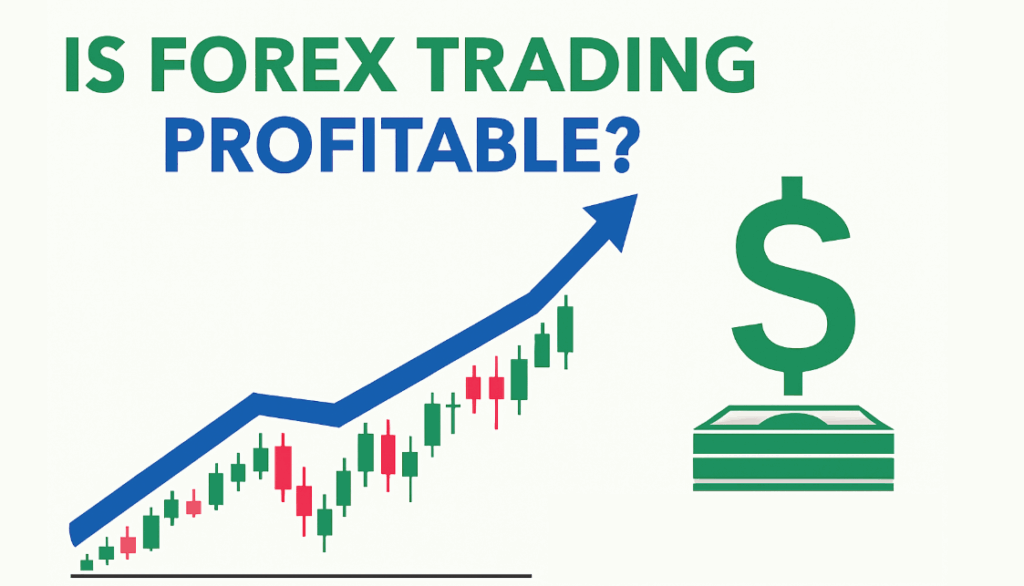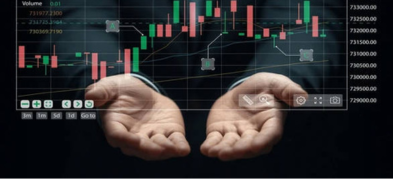
Ultima Markets App
Trade Anytime, Anywhere
Important Information
This website is managed by Ultima Markets’ international entities, and it’s important to emphasise that they are not subject to regulation by the FCA in the UK. Therefore, you must understand that you will not have the FCA’s protection when investing through this website – for example:
- You will not be guaranteed Negative Balance Protection
- You will not be protected by FCA’s leverage restrictions
- You will not have the right to settle disputes via the Financial Ombudsman Service (FOS)
- You will not be protected by Financial Services Compensation Scheme (FSCS)
- Any monies deposited will not be afforded the protection required under the FCA Client Assets Sourcebook. The level of protection for your funds will be determined by the regulations of the relevant local regulator.
Note: Ultima Markets is currently developing a dedicated website for UK clients and expects to onboard UK clients under FCA regulations in 2026.
If you would like to proceed and visit this website, you acknowledge and confirm the following:
- 1.The website is owned by Ultima Markets’ international entities and not by Ultima Markets UK Ltd, which is regulated by the FCA.
- 2.Ultima Markets Limited, or any of the Ultima Markets international entities, are neither based in the UK nor licensed by the FCA.
- 3.You are accessing the website at your own initiative and have not been solicited by Ultima Markets Limited in any way.
- 4.Investing through this website does not grant you the protections provided by the FCA.
- 5.Should you choose to invest through this website or with any of the international Ultima Markets entities, you will be subject to the rules and regulations of the relevant international regulatory authorities, not the FCA.
Ultima Markets wants to make it clear that we are duly licensed and authorised to offer the services and financial derivative products listed on our website. Individuals accessing this website and registering a trading account do so entirely of their own volition and without prior solicitation.
By confirming your decision to proceed with entering the website, you hereby affirm that this decision was solely initiated by you, and no solicitation has been made by any Ultima Markets entity.
I confirm my intention to proceed and enter this website Please direct me to the website operated by Ultima Markets , regulated by the FCA in the United KingdomIs Forex Trading Profitable?
It can be profitable for a minority of disciplined traders with a well-tested edge and strict risk controls. Independent regulators repeatedly find that most retail CFD/FX accounts lose money, so you should design your plan assuming tough base rates.
Key Takeaways
- Scale & liquidity: Global FX turnover hit $9.6 trillion per day in April 2025, opportunity and risk both scale with that size.
- Reality check: EU/UK data show the majority of retail accounts lose money trading CFDs/FX. Treat profits as an outcome of process, not prediction.
- Profit drivers: Edge quality, risk management, execution, and consistency, not high leverage determine whether forex trading is profitable for you.

Why Trading Can Be Profitable
Forex markets are open 24/5 with deep liquidity and diverse participants (hedgers, asset managers, HFTs). That mix creates repeatable patterns around macro data, policy moves, and volatility cycles that skilled traders can systematise. The BIS confirms 2025 volumes and regime shifts that favour strategies designed for expansion/compression phases.
Reasons trading is profitable:
Liquidity & Tight Spreads
The foreign exchange (FX) market is the most liquid financial market in the world with about $9.6 trillion traded daily (as of April 2025) according to the Bank for International Settlements (BIS).
That high liquidity means:
- Orders are filled quickly: even large trades can execute with minimal slippage.
- Tighter spreads: the difference between bid and ask prices is often as low as 0.1–0.3 pips on major pairs (like EUR/USD).
- Scalability: traders can scale strategies without significantly affecting price, unlike thinly traded stocks or crypto tokens.
This environment allows disciplined traders to replicate strategies efficiently, as transaction costs stay small relative to potential profit. However, liquidity alone doesn’t guarantee profit, it just removes friction so that a valid strategy can operate cleanly.
Macro Catalysts Create Structured Reactions
Forex is heavily influenced by macroeconomic data and central bank policy. These recurring events (e.g. inflation reports, job numbers, rate decisions) tend to produce predictable phases of volatility:
- Before the event: markets often consolidate (low volatility).
- Right after: volatility spikes as traders digest new information.
- Later: trends emerge if the data shifts policy expectations (e.g., USD strengthening after higher CPI).
Because these events follow a scheduled calendar, traders can backtest and design strategies around them:
- Example: entering breakout trades only when CPI surprises exceed a certain threshold.
- Example: fading post-event overreactions when the initial move overshoots.
So, profitability arises because market behaviour repeats under similar macro circumstances, letting traders build statistically valid strategies.
Flow Heterogeneity
Not everyone in the FX market is there to make speculative profits. You have:
- Corporates hedging currency risk (not price sensitive)
- Central banks intervening for policy reasons
- Asset managers rebalancing portfolios
- Retail traders and HFTs chasing short-term moves
This diversity of motives leads to temporary inefficiencies small, exploitable price distortions:
- A large hedge order might push EUR/USD slightly below “fair value,” giving short-term traders a mean-reversion opportunity.
- News-driven panic selling can overshoot true fundamental value before correcting.
Professional traders or algorithms who can recognise these imbalances and act faster can profit from rebalancing and mean reversion before the market stabilises.
Profitability doesn’t come from predicting every move, it comes from identifying repeatable edges within a massive, constantly flowing global market.
Why Most Traders Aren’t Profitable
While the forex market offers endless opportunities, most traders fail to turn those opportunities into consistent profits. The same deep liquidity and 24-hour access that make forex trading attractive can also magnify mistakes. Many traders enter the market with unrealistic expectations, insufficient risk control, or no tested strategy. Instead of treating trading as a process built on discipline, data, and psychology, they chase short-term gains or react emotionally to losses.
As a result, statistics from major regulators show that a large majority of retail forex accounts lose money not because the market is impossible, but because the approach to trading is often flawed.
- Leverage misuse: Small adverse moves at 20–30:1 can erase weeks of gains.
- Process gaps & behaviour: Overtrading, averaging losers, and abandoning stops dominate poor outcomes; regulators still report ~74–89% of retail CFD accounts lose money.
- Regime shifts: Strategies that worked in calm periods can break during volatility spikes; 2025’s turnover surge underscores shifting conditions.
How Profitable Is Forex Trading?
Forex trading can be profitable, but only for a small percentage of disciplined traders who manage risk carefully and follow a proven strategy. Studies by major regulators show that most retail traders lose money, while experienced traders typically aim for consistent single-digit to low double-digit annual returns with controlled drawdowns.
Most Profitable Forex Trading Strategies
There’s no single formula for guaranteed profits in forex. Instead, profitability depends on using the right strategy for the right market condition. The most profitable forex trading strategies are those that combine clear entry and exit rules, disciplined risk management, and consistent execution. Successful traders adapt their methods to changing volatility, market trends, and economic cycles, focusing on repeatable setups rather than chasing predictions or short-term luck.
Trend Following
- When it works: Macro/policy trends and volatility expansion (common in 2025).
- Risk control: ATR-based stops, partial exits, weekly loss cap.
Breakout Trading with Volatility Filters
- When it works: Compression, expansion (post-data/central-bank).
- Risk control: Confirm with range/ATR filters; avoid low-liquidity breaks.
Mean Reversion (range trading)
- When it works: Quiet macro, contained ranges (Asian/early EU sessions).
- Risk control: Time-based stops and “no-fade” rules against fresh trends.
Carry Trade (yield differential)
- When it works: Stable risk sentiment and widening rate spreads.
- What to know: Carries can unwind violently in risk-off phases; BIS work and academic studies document drawdown risk and mixed out-of-sample profitability
Event-Driven / Post-News Patterns
- When it works: Codified rules per event (e.g., CPI vs. jobs) with reduced size around widening spreads.
- Risk control: Pre-defined max slippage and “skip if spread > X pips.”Event-Driven / Post-News Patterns
Profitability Framework You Can Actually Use
- Risk First: Risk 0.25–0.5% of equity per trade; hard stops; daily loss limit; weekly circuit-breaker.
- Edge, Then Evidence: Backtest with realistic costs; forward-test live on micro lots; validate across pairs/timeframes.
- Execution Quality: Trade liquid sessions for your pair; measure slippage; use pending orders/alerts.
- Review & Adapt: Journal entries/exits and emotions; track expectancy and risk of ruin; de-risk when stats degrade.
Conclusion
Forex trading can be profitable but only for those who treat it like a disciplined, data-driven business. The global forex market offers unmatched liquidity, 24-hour access, and countless opportunities, yet statistics consistently show that most retail traders lose money. The difference lies in preparation, psychology, and risk control.
To make forex trading truly profitable, traders must focus on building a tested strategy, managing risk with precision, and maintaining consistency over time. Profits come not from guessing market direction, but from executing a repeatable process under changing conditions.
Whether you follow trends, trade breakouts, or capture yield through carry strategies, your long-term success depends on how well you balance reward and risk. In short, forex trading rewards discipline and patience, not luck or leverage.
Disclaimer: This content is provided for informational purposes only and does not constitute, and should not be construed as, financial, investment, or other professional advice. No statement or opinion contained here in should be considered a recommendation by Ultima Markets or the author regarding any specific investment product, strategy, or transaction. Readers are advised not to rely solely on this material when making investment decisions and should seek independent advice where appropriate.












